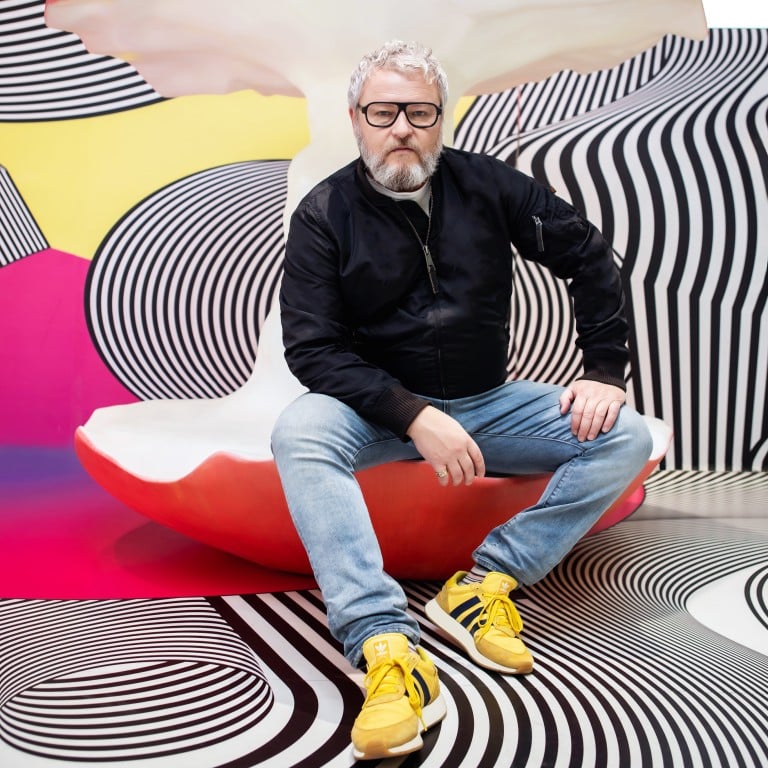How German artist Tobias Rehberger is disrupting the art world – stripy cars, talking skyscrapers, wartime dazzle patterns, and lots of brands …

- The multi-medium German talent likes to examine our preconceptions about what art is, who does it and how it differs from design – but some question whether his work is art at all
- From his recent Frieze London show to redesigned Volkswagen Beetles and ‘talking’ AI-controlled towers on Shanghai’s Huangpu River, the Golden Lion-winner tells us what really counts
Rare is the artist who wants their work to blend in with its surroundings. Tobias Rehberger may be the exception. The 2009 Golden Lion-winner has long been fascinated by camouflage, and particularly his own versions of “dazzle”, the striking World War I-era disruptive pattern painted on ships and aircraft to bewilder the eyes of would-be enemy observers.
“The idea of having something that’s meant to be looked at becoming something that disappears has always been intriguing to me,” says Rehberger, whose latest large-scale work – the centrepiece installation for the recent Frieze London art show – created an immersive spectacle out of distorted space.

“When I first read about dazzle 30 years ago I loved the paradox of strong graphics being used to make something less visible – and in turn I like the idea that art is not always something to look at. Art is also something you can be in or around or with. And dazzle isn’t there to look at either.”
Indeed, Rehberger’s characteristically colourful work – spanning sculpture and installation, industrial objects, interiors, painting and jewellery – is disruptive in other ways too, notably because ideas of transformation, transposition (he built a Japanese garden in Manhattan, complete with snow, in August) and, more powerfully, translation are key to it.
Art should be art of our everyday lives, not exceptional, not something you just go somewhere to look at, then to turn around and go home. I want art in our kitchens, our garages, our cars
The German talent distorts images with outsize pixellation, for example. And one of his most celebrated and fun works, “Half Remembered Things”, involved drawing a sketch of a classic car from memory, then having the vehicle built from the sketch alone. Cue cartoonish, slightly “off” versions of the Volkswagen Beetle or the McLaren F1.

“I drove [the sketches] to Thailand because the industry there has high flexibility in terms of production, and the results were not just shells but actual drivable cars. Well, maybe not in Germany, but they worked,” laughs Rehberger.
A similar work of recontextualisation saw craftspeople in Cameroon create his versions of iconic furniture designs.
“I was interested in this gap between this most simple starting place – my drawing – and this super complex object created from it,” adds the 56-year-old. “In the end, I was just making a phone call [to the car manufacturer] and saying ‘make a Renault Alpine’, from sentence to object with nothing in between.”
